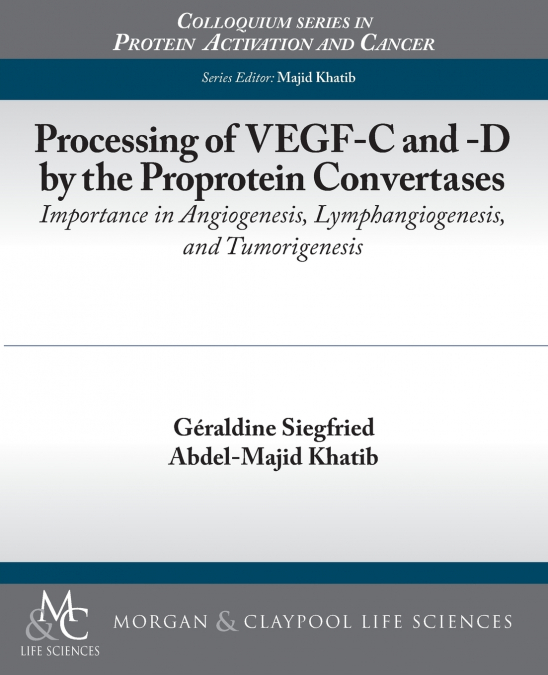
Abdel-Majid Khatib / Geraldine Siegfried
The vascular endothelial growth factor (VEGF) family members that include VEGF-A, -B, -C, -D,and placental growth factor (PlGF), display distinct binding affinities for their receptors VEGFR-1,-2, and/or -3. In addition to their requirements in the initiation, development, and maintenance ofblood and lymphatic vasculature, VEGFs and VEGFRs are upregulated during neoplasia and areinvolved in the remodeling of tumoral blood and lymphatic vasculature. By activating VEGFR-1and VEGFR-2, both expressed on blood endothelial cells, VEGF-A promotes the formation ofnew tumoral blood vessels and thereby accelerates tumor growth. In contrast, upregulation ofVEGF-C, a ligand for lymphatic endothelial VEGFR-3 as well as for VEGFR-2, induces theformation of tumor-associated lymphatic vessels and thus promotes the passive metastatic disseminationof tumor cells to regional lymph nodes. Of the VEGF family members, only VEGF-C and-D were found to be proteolytically processed by Furin-like enzymes. This processing controlsthe selective activation of VEGFR-2 and -3 signaling during tumor angiogenesis and lymphangiogenesis.Here, we provide an overview of angiogenesis processes and discuss the importance ofVEGF-C and VEGF-D precursors processing by the proprotein convertases during the activationof VEGFR-2 and VEGFR-3 receptors and the mediation of their functions during angiogenesis,lymphangiogenesis, and tumorigenesis.